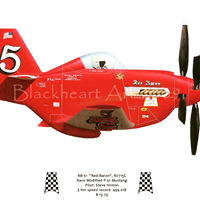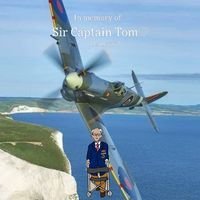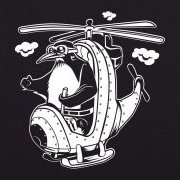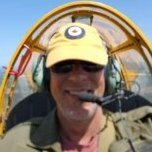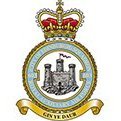Search the Community
Showing results for tags '1/32'.
-
Hallo This is one of my British a/c from WW1 from WNW. As for so many kits from WNW, the instruction is not quite accurate. The same will accompany now at the next build, the RE.8 and afterward the F2b Bristol Fighter. You may also have a look on my WIP. All insignia are sprayed. Happy Modelling
- 10 replies
-
- 15
-

-

-
So, to start with: I'm not after accuracy, I only build and paint for the sheer fun of it. This Spit has been in my stash for a while, waiting for a suitable paint scheme to present itself. Then I saw the Silver Spitfire, and thought now, there's an idea! Unfortunately I can't find any decals for that machine. Then I came across this one: https://allspitfirepilots.org/aircraft/RN201 Not the same aircraft, I know, it's an FRXIVe, but that I have to live with. I love the paint scheme. Some pics of the "office" to begin with. I couldn't resist putting in some cables and then some. And some left over decals. And as usual, you can trust Tamiya to engineer their kits well, and the fit is very godd. The fuselage halves came together like they had never been apart. I really love that in modelling, not having to work around bad fits. Stay tuned, I'll be back when this pandemic allows me to have some more fun at my workbench.
-
This project started out as something totally different and took on a life of it's own! This doesn't happen often to me, so it was a pleasant surprise and made for a fun journey. A bit of a backstory: Bernhard Manfred Waßertropfen - also known as Opa (Grandad) was seaking a way to fullfill his childhood dream - to travel the skies - free like a bird. He therefore took a long look at his old trusty 1904 Mercedes and decided there and then to transform it into a Aerocar. After a long time of tinkering and many trials and errors - he finally succeded and could take to the skies - up where he so long had dreamed of being. We see him here on his first travel, where he - together with his good old companion - his dog Freßsack - is flying over the Bavarian lake Eibsee waving an Edelweiss in his hand. Link to the build: Cheers Hans J
-
With my SMTS TVR nearing completion and my Airfix Aston Martin DB5 looking like it might be a bit of a slow-burn I thought I'd try something a little different. On the Airfix Facebook page there was a challenge to build an Airfix starter set using just what was in the box and a few simple tools. I thought it might be an interesting experiment to take that approach with this kit. Can I build something to an acceptable standard using just the supplied parts, paint and glue? Box photo. Close-up of the "extra" bits, six paints, two brushed and some Poly Cement. I think the colours are silver (was Humbrol #11 called Silver Fox?), red, white, matt black, matt aluminium and some sort of tan/brown. Apart from the starter set parts I want to stick to some cutters, a knife and some sanding sticks. I think that's what Airfix suggest as allowable tools. I guess I should have gone back to basics with some nail polishing files rather than "proper" sanding sticks. As for the kit, it came neatly packaged and even without opening the bag I was pleasantly surprised. Straight out of the bag it actually looks like a Triumph Herald. Some cleaning up to do, but really not bad. Overview of the other parts, it's quite detailed. Clear parts in their own bag. Pretty clean too, apart from the tail lamps. I have to say that this is a really charming kit, it deserves a decent build. I've made a start and there will be another update soon.
-
Hello gents I was fortunate enough to receive the ICM Gloster Sea Gladiator as a Christmas gift from my folks and my Dad has enquired after its progress a few times since; as I rashly promised that it was next in the build queue it's past due time I got started on it. I also have the original issue Gladiator kit by the same company, which I had been planning to build as one of the Aéronautique Militaire Belge (Belgian Air Force) Gladiators of the 1/I/2 Aé (Comet) Squadron based at Schaffen in May 1940. The Gladiator will be built as G-22, flown by First Sgt Denys Rolin, who had what might euphemistically be described as an 'interesting' day in this aircraft on 11th May 1940 when he was part of a flight of 6 Gladiators tasked with escorting 9 Fairey Battles of 5/III/3 Aé on a mission to bomb the bridges over the Albert Canal. The Gladiators became embroiled with Bf109s of JG1 and although Rolin claimed a 109 as a probable he was in turn shot down and bailed out. The article linked to above says that he bailed out and was captured, but another article states that he was in fact 'roughed up' by Belgian troops when he landed, locked in a cellar and later captured by the advancing German forces. I am planning to build the Sea Gladiator as N5519 'R' of the Hal Far Fighter Flight using the kit decals, having been inspired in my childhood by the story of the three plucky biplanes holding off the might of the Axis powers, which is how I saw it at the time and if, later on, it transpired that it was true only for a comparatively short time in the opening chapter of the Siege of Malta still it left me with a certain fondness for the symbol of Faith, Hope and Charity and for the Gladiator as an aircraft. N5519 'R' was the only Gladiator destroyed in aerial combat when it was shot down by a Fiat CR.42 flown by Sergente Manlio Tarantino of 23o Gruppo, Regia Aeronautica, on 21st July 1940. The Gladiator's pilot, Flying Officer Peter Hartley escaped alive but was badly burned. Here are the kits: They're good sturdy boxes, with a more flimsy outer cover. Here are the parts; the different sprues for the Sea Gladiator are in the middle: Here's some of the bits and bobs that have accumulated: I've ordered another set of the LF decals for the Belgian Gladiator so I can make the G-22 serial and numbers. I've got another Eduard mask set on the way too. The kit's painting guide for the Sea Gladiator fits well with the information in Britmodeller's Tony O'Toole's excellent book on the Malta Battle 'No Place for Beginners'. Oh and I got some resin exhausts from Quickboost and a Top-Notch camouflage masking set for the Sea Gladiator: I think that will do for now... Cheers, Stew
- 129 replies
-
- 27
-

-
- Gladiator
- Sea Gladiator
-
(and 1 more)
Tagged with:
-
my last built, enjoy :
-
There have been a lot of these lately so I am not going to bother with box & sprue shots, just pitch straight in...I had been thinking about this one for a while, so had a Plan. This meant starting by jumping ahead and assembling the wings and tailplanes so I could do some serious dry-fitting against the fuselage halves - it all seemed pretty good, excellent tbh with a cautionary note that a gap was possible at the wing root but very easily cured with a spreader, which in the event was not required. I decided early on that I wasn't going to fully prime this one - somehow the primer always seems to come off very easily anyway so isn't giving much advantage aside from revealing joint flaws - so put stage one of The Plan into action, a black wash into all the rivet detail, using the Vallejo wash. This worked pretty well, the wash was given hours to dry and re-activated easily with water to wipe off nicely. It did reveal one curiosity, namely that Revell is a bit inconsistent with the sizes of the recessed rivets - on the top of the tailplane they are nice and small, on the bottom, twice the size. Fortunately the underside is not going to be on show once its in the cabinet Next it was on to the cockpit; should mention here that part of The Plan was to use this set inside and out: First out was the Interior Grey Green for an overall spray over all interior surfaces; the rear of the fuselage halves was masked out and given a coat of silver, then on to detail painting and detailing - The Plan involved using the Barracuda snapshot upgrade for this kit and their resin seat, a very nice bit of moulding even if you do have to think about how exactly it will fit in with the kit parts. As with all the recent 1/32 kits from Revell, the detail parts are quite nice but need a lot of cleanup to make them fit perfectly - as it must be said do a lot of the parts, but once clean they are generally a good match. Barracuda include decals with the snapshot and some of these were used, but they were more awkward then I would have liked. I did not use their dial decals as they simply did not match the size of the dials on the kit IP, instead I used some from Airscale. The kit instrument decal is even worse, it doesn't even match the layout of the plastic and is unusable as far as I am concerned. A layer of Future/Klear and it was out with the Vallejo wash to bring out the details, and here I hit the first hiccup in The Plan; after just a few minutes drying the wash refused to budge. A quick test on the wings showed that there it was happy to re-activate and wipe off, so I am blaming the Future here, it has clearly reacted and absorbed the wash. I shouldn't be too surprised, I know some people find it be a near miracle fluid capable of uses far beyond its design, I am consistently disappointed with its results. I think we tend to forget that it is first and foremost designed as a floor polish not a varnish, its just cheaper than real varnishes. Anyway, I am now disappointed with my cockpit as it looks messy, but am not willing to strip it down and start from scratch, so pressed on. Next time, a proper lacquer varnish before washing. Seatbelts from Eduard, and the cockpit tub is glued to the starboard fuselage half Next it was time to get the fuselage together, and suddenly the fit didn't seem too good; I think this is down to me, somehow I must have not got the cockpit in perfectly and it was forcing the halves apart slight at the front. I trimmed it a bit to improve matters, but otherwise went with brute force and superglue, taking it one section at a time. I still ended up with a gap on the forward fueslage, but on the plus side no longer needed a spreader to close up the gaps at the wing root. A little pressure was needed to keep the fuselage properly bedded down whilst the glue set, but otherwise no filler at the wing roots apart from a very small amount at the trailing edge where the corners are a little short-shot Those rivets are looking nice and hopefully will show through the Lifecolor paints, which tend to be more transparent than Vallejo or Tamiya. On the underside I used the Barracuda oil cooler but did not have the confidence to do the major surgery on the other side for the radiator; I am also using the ailerons from the same set, though do wonder if my set suffered a little from shrinkage, everything seems a little undersized and indeed the oil cooler needed a sliver of plastic card to lengthen it so it would fit the recess. Which brings us up to date; a little sanding around those seams where I have used the trusty 3M glazing putty (highly recommended) and I will be only using primer along the main seams to confirm they are good and cover the red of the putty.
-
Hi Everybody, here is my latest build, not my usual scale but a thoroughly enjoyable build. Built entirely out of the box, just the addition of some scratchbuilt harnesses and buckles. Painted with Tamiya and Revell acrylics. A few pictures of the interior before it all gets closed up. I know the buckles are not correct but this was my first attempt at making them. I decided to paint the instrument panel rather than use the decals. Thanks for looking, as usual all comments and criticisms are welcome.
- 11 replies
-
- 25
-

-

-
Another Spitfire Mk lX in Desert Colours 145 Sqdn North Africa 1943. Had quite a few problems with this one, mainly trying to adapt the undercarriage to flight mode, the canopy not fitting well (big gap between the fuselage) and the decals breaking 😤 I think I should have taken a bit more time and care with it. I made my own stand from 3mm brass rod and a wooden plinth.
-
Hi Folk's,second 1/32 build of the year and a real change from the heavily weathered Vb,the BBMF Spitfire P7350 veteran of the battle of Britain and kept in immaculate condition by the flight's engineer's and ground crew. Now I found this scheme she wore in the late nineties the only time she has not been painted to represent a front line fighter squadron,she represent's the Vb's operated by 277 air sea rescue squadron.Now I'm not a user of AM apart from decal's but to try and do justice to the kit I've used a set of Mastercaster's wheels and a Quickboost exhaust in the style she wore at the time. Any way here she is many thank's for looking.
- 12 replies
-
- 32
-

-
Another one finished....... Revell 1/32 scale Spitfire Mark IIA, P7665 YT-L, of No. 65 Squadron RAF . It was shot down by Messerschmitt Bf 109s on 5 February 1941. Yes I know the rear view mirror is missing, I dropped it on the floor and I think the dog ate it!! 🥴😤
-
I recently saw a good friend who is also an excellent modeler. Whenever I see him he always gifts me old models and things. Amongst the box of stuff he gave me was a partially started kit. He has a habit of using the rudder to open and close things such as bomb bay doors or canopies. This particular kit he told me, he ended up giving up on because of the way the canopy pivots open. So I've no hope in getting it to work. Below is a picture of what he'd already done to the seat I then noticed the air brakes have been modified. Looking closer there is a mechanism inside the fuselage. (I've taped it in place) Turns out this is to control the air brake doors, as can be seen on the under side. I've no idea where to start to get this mechanism to work. But I'll sure have a go. I will have to call him and see if he remembers what he was going to do. In the mean time I've started with the usual stuff. I've put the wings together and filled them Looking at after market cockpit sets I decided just to add some bits to the standard cockpit, just to add a little interest. I also removed the brass work my friend had added. (sorry) I've got another 2 projects on the go at the same time as this. But couldn't resist it since its already been started. I'll get some paint on it tomorrow hopefully. 🐧
-
Fokker D.VI 1/32 Roden The D.VI is not as well known as other Fokker fighters of the Great War, but it sits chronologically between the DR.1 Triplane and the superb D.VII. In fact it was entered into the same Idflieg 'Fighter Competition' at Adlershof in January 1918. It was already outdated with its rotary engine unable to provide the power levels of the inline engined D.VII. However a small number of them found a niche as Home defence fighters, as they were able to start up and take off immediately enemy bombers were approaching, whereas the inline engined aircraft had to take time to warm up. The Roden kit is based on their earlier DR.1 Triplane kit, with a new set of biplane wings as the main change. It also has the advantage of almost no rigging. The LMG/08 Spandau guns are solid mouldings, but they also provide unjacketed ones for aftermarket etched jackets - I used some Eduard ones I had on a Fokker D.VII set. The fuselage is pretty much the same as the Triplane kit. It comes with a full set of lozenge decals, which I was bit wary of having found previous Roden decals to be problematic. But these are a quantum leap forward, a vast improvement, they were easy to use, settled down well, and the colours are pretty good. So forget any previous experience with Roden decals, these are really good! On with the photos: I added some brass etched stitching to the under fuselage centre line. Thanks for looking, John
-
So with a week to go I thought I'd set out my placeholder... I'll be building (and hopefully finishing this time) the Eduard Bf109E-3 in 1/32 using the markings for Black 11+- of 5/JG3 based at Brombos in early August 1940 which are part of the Kagero Battle of Britain Part 2 set and which were very kindly sent to me by @Silver Fox and for which I would like to record my gratitude: thank you Andy Trying to dig out the history of this aircraft and the pilot has produced very little apart from a few pictures on Asisbiz, so any further information about either would be gratefully received, but in short Black 11 was one of the aircraft assigned to the schwarm led by Unteroffizier Josef Heinzeller and I believe that all four aircraft received the stylised profile of the dog 'Schnauzl' in the cowling, 'Schnauzl' being Heinzeller's nickname for both his childhood dog and, apparently, his wife. What a charmer. Similarly I have been able to find out little about Unteroffizier Fritz Mias beyond the fact that he existed, his first kill was a Potez 631 or 637 on 17th June 1940 near Lecaude and he was himself shot down in 'Black 8' on 19th June 1940 in what may have been a 'friendly fire' incident whilst escorting Stukas to Cherbourg - the plane was a write-off but Mias returned safely to his base the next day. The Kagero markings for Black 11 show two kill markings, but I have not been able to find any record of the second kill, or indeed anything else about Fritz Mias. Incidentally the same markings were provided as one of the options included with the Dragon 1/32 Bf109E-3. The Eduard kit is, as far as I know, pretty well thought of, with no glaringly obvious problems reported in the reviews I have read apart from the fact that as the DB601 engine is more-or-less scaled to size rather than to fit under the cowling, you have to decide early on if you want the engine on display or the cowling fitted, as you can't have both. I'll have my cowling fitted, thanks Here's the box for this particular edition of the kit, it is the Profipack version that I picked up for around half the current price: Instructions: Clear parts: Wings and fuselage sprues: Control surfaces etc.: Various cockpit, engine and undercarriage parts: Etched parts and masks: ... and decals: That's what comes in the box - I've also got a... well, a raft of aftemarket stuff, to follow... Cheers, Stew
- 106 replies
-
- 22
-

-
Since I seem to have hit some leaves on the rails over in my Pullman Car build and have been stymied by my nemesis, the unassuming but terrifying nightmare otherwise known as... the paint job, I thought I should try and refresh my batteries by trying a diversion - namely, starting self flagellation another build. I've had this one in the stash for a while, and my interest was sparked by @HL-10's very nice Fly 1:32 Wessex build (sorry, don't know how to add that nice little box thingie with the preview) so I thought what the heck, let's give it a go. What's the worst that can happen ? Well, let's get some things straight before we start... this will not be a quick build. I just can't do quick builds. Also, as my slightly battered psyche joyrides on the sinusoidal monorail that is mojo, I will probably switch back and forth between this build and the Pullman Car to keep things (namely me) interested. Scratchbuilding? Well it goes without saying - yes, there will be lots of scratch building. There may even be some 3D printed parts or some resin parts cast up. Let's wait and see shall we? So what are we dealing with here ? Well, here's a couple of bits of 1/32 Wessex taped up and sitting in front of my 1/32 Pullman Car (yes, it's just the chassis so far, and yes, it's upside down). I never realized just how close they were in size to each other before. I'm going to need a bigger display case. and we're off! I actually glued two parts together 'scuse the 1:1 feet photobombing the picture. As this thread continues, I'll try and (constructively) review the kit. So far there are some nice aspects, and some not so nice aspects that I have come across. The most immediately apparent is the lack of any alignment features which is proving troublesome, particularly as the parts also have different wall thickness - you can't just go and glue a tab on the back of one part as the surfaces then end up at different heights. Then, part edges aren't square - tale a look at the gap on the reverse face here. (That will be dealt with later after the glue has cured) So, a short post to start the proceedings, but more to follow as mojo is rising
-
Hi folk's a marker for a future build once the BBMF Spitfire and Tempest are done,finally got the right kit sent after the Technik version was sent in error(yes I know I should have said nowt and kept it) but really all that light and sound isn't really my thing. Anyway Revell;s mk ix was picked up on e-bay for 20 quid including postage which is a lot of kit for your money.I then looked for something a bit different scheme wise as I did with their Mkii This scheme screamed to be built,now I know someone is bound to point out no photo evidence exist's of it's origin which is fine it's still getting built! .
-
Hi Folk's with my 1/32 year kicked of with Trumpeter's Spitfire Vb and Me 109 (both nearing completion) next is another Spitfire in the form of Revell's Mkll.This is my third crack at this nice but not without faults kit.I wanted to steer clear of the traditional BoB schemes but the later day fighter scheme's require a lot of correction's in the form of wheels prop's etc as a non rivet counter I'm not really bothered but for this build I am replacing the wheels with a set matching those of the flight's Mkll and finishing her in the 1997-99 277 air sea rescue squadron scheme which I believe was the first time the aircraft was not painted in a front line squadron scheme and no weathering needed! Here's the box I'll make a start next week.
-
Hi all, First of all, many thanks to @Col. for letting me join in, and I hope this build will be a treat for all of us! Meet the Icelandic Fine Art resin Bucc in 1/32. Fuselage is cast from resin/aluminium matrix while the rest of the kit is polyurethane resin. It's a very limited run kit (I believe @Icelandic Fine Art only released 35 complete kits as it's basically one solitary genius [also called Alan!] who's toiled on this for 20 years!) so I'm very glad to have got one and this might be among the first ones built if I can maintain my concentration for the whole thing! This a vast kit in this scale. I wasn't prepared for how big this aircraft is, having never built one before: That's a 1/72 Mustang next to it, and it's sitting on an 18" x 12" cutting mat! Certainly the chunkiest, heaviest kit I've ever considered building - it should clock in at almost 3kg when finished... This is very much a cottage industry product, but prepared over 20 years of research and effort. A mix of beige and white resin shows the various parts - the tailcone halves are more accurate replacements for the fuselage moulded ones. The airbrakes will be mounted closed as there's no provision to open them in the kit as it is. You can also see the wheelwells which fit into recesses in the fuselage, and a replacement recess for the arrestor hook. Both the replacement parts will require the relevant areas to be cut from the existing moulded parts. At top left is the bulged bomb bay for building an RAF version. There are resin gear legs which are quite substantial, but I do wonder if they'll be enough to support the huge weight of this kit long-term. Also included are the slipper tanks, buddy refuelling pod and whatever that is second from the top on the right side. Anyone know what it is? 🤔 Alan (@Icelandic Fine Art here on BM) has done a really good job with the cockpit: It needs tidying up but the detail is very good, including sidewalls and instrument panels. Also includes resin cast canopies - the obs/nav's windshield needs to be scratchbuilt. The instructions are copious A4 photocopied sheets in the style of 'modeller's notes': Some nice internal drawings and scale diagrams: There's even a limited clear decal sheet included - white backed ones will need white decal backgrounds to be applied first. Fortunately @Phartycr0c on Britmodeller has been able to organise some 1/32 decal sets with KitsWorld, so I've ordered some of them already. I intend to build the kit as it was designed: a vanilla Royal Navy S.2 in EDSG over white with a buddy refuelling pod and slipper tank. I'll see how I get on, if it's going well I might scratchbuild and add some outer pylons/practice bomb units as well. Anyway - this is here as a placeholder/hors d'oeuvre until I get cracking on it early next week. Until then, hope you like what you've seen so far, I certainly have! All the best, Alan
-
Hi again, Britmodellers! Kicking off the first new build of 2021 (yes I know I'm supposed to be doing the Buccaneer, but!) with a subject I haven't seen since the early 80s. Shiny new BIG box with included paint and glue! (Plot twist - I'll be using my own ) I think the '50 Years' refers to the age of the kit rather than the aircraft itself. It's infamous for being designed from the pre-prod Harrier GR.1 XV278 which was at Gatow in West Berlin. The kit as produced means you can make that one unique airframe unless you are willing to make some modifications! It's a very big box for what isn't a whole lot of plastic: The kit dates from the early 80s which means chunky moulds, raised panel lines and soft details: This is the cockpit and seat as produced! The general shapes are 'a bit off' with the area immediately aft of the intakes being the worst culprit - more on that later. I can't fix all the various issues and to be honest I don't want to. This kit was a product of its time and it's the only game in town if you want an early Harrier in 1/32. That said, I want to build XV802, a 20 Sqn GR.1 which was lost in a fatal crash in Germany 1972 (there's a lovely pic of it in its shiny glory HERE ) so...there will be some surgery required - wish me luck! Alan
- 47 replies
-
- 4
-

-
- Revell
- classic kit
-
(and 1 more)
Tagged with:
-
Please let me know what you think and any suggestions/advice/techniques are welcome! Thanks! After a long absence from these pages ( I have been lurking once in awhile) I present a WIP of the new Revell 1/32 Tempest Mk.V. This of course a re-issue of the Special Hobby kit. I will be using the Barracuda Studios nose correction set and wheels/tires. I bought Roy's seat too but I think the kit parts are superior in this rare case. I believe the Barracuda seat was designed for Revell's older Typhoon??? In regards to the kit I can say the following: - Moulding quality looks excellent. Fine engraving, rivets and raised detail. A really nice kit! - Heavy sprue gates. These are sometimes very heavy and can make cleaning up some of the tiny parts very tricky, - Fit is pretty good. Dry fitting is a must. I had to drill out a few locating holes to be a little larger. I cut off the locating pins on the drop tanks, stabilisers, elevators and rudder to get better algnment. - Decals seem good so far. Thin, in register and settle down very well with Microsol and Set. I haven't tried Gunze, Tamiya or Daco solvents yet. - Instructions are so-so. Clear illustrations with colour indicating newly installed parts but they do not show where cockpit components fit clearly. Just an arrow to the general area. Luckily I have an Eduard Tempest kit, a couple of photos and the internet to help. Anyway here we go... All interior parts were first sprayed with Tamiya X18 semi-gloss black. Green areas are XF-71 Cockpit Green lightly airbrushed, allowing lighter and darker areas. All parts were drybrushed with an off-white mix, clear coated with future, black oil paint/lighter fluid wash then finished with a mix of Future and Tamiya flat clear. Extra dry-brushing and picking out details as needed with Vallejo acrylics. The stencils are included in the Revell kit. The kit's decals were used for the instrument panel except for the lower right one. This was replaced with a Mike Grant decal as the kit one was rather ugly. The placards are from the Mike Grant set. The decals settled very well using Microsol and Microset. The panel was given a seni-gloss finish and the dials were then filled with Tamiya X22 Clear. The depressed area at the top should be an opening in the panel and a copper tank is visible. I used a piece of round scrap, painted copper to represent the tank. It looks crap in this close up but OK once in the fuselage (and viewed from 4' away). The red handle on the lower right side is not mentioned in the instructions. It is the canopy jettison handle. There is a spare handle on the sprue (maybe from the Mk. II?), I drilled a hole and dropped it in. I used Kamizukuri paper seat belts. I LOVE these but they seem hard to find nowadays. I modified them by splitting the top of the shoulder belts to fit over the attachment bars. From the references I found, which are limited I THINK the Sutton harness secondary harness fits through the hole in the seatback. Why else would the hole be there? Note I have not added the locking clip (included in the Kamizukuri set) and the locking pin (scratchbuilt from copper wire) in this picture. Bringing together these componenets is a little fiddly but it does work. Dry-fitting showed that some of the locating holes needed to be drilled a little larger. I LOVE those Kamizukuri paper seatblets! The straps are just drybrushed lightly with brown. The rivets were picked out with copper and the buckles were sprayed dull stainless steel. The buckles come on their own sheet. The die cutting is extremely fine and the paper material is quite tough and stands up to threading the straps through them. Here you can see the locking pin and clip hanging on copper wire. MIght be a while till the next installment - it's that time of year. Any comments or hints are welcome! Cheers for now
- 35 replies
-
- 18
-

-
- 1/32
- Special Hobby
-
(and 1 more)
Tagged with:
-
Don't know if I imagined this, but I seem to recollect seeing photo etch for the tail fin aerial connection and gun-heating air vents for early mark Spits. Of course I can't find anything online now! Was I dreaming?
-
Hallo This is my first A-5 version of the Fw-190. More than ten A-8 built. The Hasegawa kit 1/32 fails to show where the location of the actuator Y2 of the inner wheel well door is positioned. There is no hole for the pin! From my logic, the place where it is shown does not match, due to the wheel by itself. Can you experts give me an advice? Thanks in forward. Happy modelling
-
Hi everyone I just wanted to share my thoughts and progress using the Cricut Explorer Air 2. I received my Cricut last Wednesday, my wife brought it for me for my 50th birthday (thank you Leanne). Now I'm a bit of a luddite when it comes to technology and I'm incredibly lazy I just want things to work with out any messing around but to my surprise the Cricut is very easy to use and I think the masks that you can make are as good as any commercially produced items. I started by looking for any additional software that you might need to use for designing and producing masks, the Cricut software is ok but almost every user I could find recommended using Adobe illustrator so I duly subscribed to Adobe (£19 pcm) down loaded the software and had a play. I started by producing a series of RAF roundels circa 1939 - 45, I found several references online that gave the size of each roundel type in inches so I found an online conversion tool and converted these measurement's to cm and drew them in illustrator to 1/48 scale. I then sent the image to the Cricut software and cut my first mask a Type A.1 roundel in 1/48 scale. I used some white vinyl which has proved to be very hard to remove because its too tacky and it lifted the paint. I had another go, this time creating a mask for a 56 in, 28 in, 21 in upper wing roundel again in 1/48 and sprayed that (see both roundels below) Not too bad I think I could be onto something here? I then decided to create some templates for RAF fonts circa 1939 - 45 again a search of the internet threw up some examples so using these a place to start I produced my own set of fonts again in illustrator.. ..for my next test I scaled my drawings to 1/32 and created some more masks this time using Frisk film as the masking medium and this time sprayed my 1/32 Fly Hurricane paint mule again applying a Type A.1 fuselage roundel and code letters.. I think with a little more practice the Cricut will prove its worth enabling me to produce any set of codes, markings, camouflage, wheel and canopy masks. I think the Cricut is a great bit of kit, not cheap (my wife paid £260 for mine) but I'm the kind of person that will spend a small fortune on after market masks so I think that for my it will cost effective in the long run plus its quite enjoyable researching and making the masking templates. Cheers all Iain
-
So the Christmas of 2020 was a little of a strange one, and the most of the year was no better. Constant home schooling and only essential shops being open. For most of us it was a good time to get plenty of bench time, and make out ways down the pile of kits in the stash. for me? It was a time to start fresh, go back to the basics of modelling, learn new techniques and above all come back to Britmodeller. For Christmas I asked the wife for just one thing, as the title suggests, yes a big tornado. For many years I have wanted to build a large scale tornado, and have all the bells and whistles to go with it. This Italeri offering was released late 2020 (November) and offered a large price tag to go with it (£109.99 - £129.99). Is it worth the price? Well let’s find out. As you can see, it has all the usual tornado parts, movable wings and ordnance, weapons, control surfaces which can be posed open or closed, real rubber tyres and wing gloves (nice touch), and much more. The decals are also impressive, with four options to choose from. These are for various tornados as follows. Tornado GR4, ZA542, danger mouse, operation Tellic 2003. Tornado GR4, ZA367, 617sqdn, Operation Herrick, 2010. Tornado GR4, ZA542, 31st sqdn, Operation Ellamy, 2011. All the decal options are printed in colour in a separate booklet (Nice touch). Those walkway lines sure look fun! The instruction book has clear construction stages from start to finish, showing each step and colour call outs on many parts. There is a number of parts which are not used, could indicate other versions of Tornado in the future? As for the construction it’s detailed but simple, clearly printed and easy to follow. Pilot and co-pilot seats with added photo etch (included). cockpit construction, very nice detail and separate parts for extra detail. Sudden jump to front undercarriage leg and bay assembly. Installed into underside of front fuselage, note drill points for chin pods. Wheels and doors, my advice would be to skip to near end of construction. Join on front fuselage halves and radar, noted weight in front and also detail painting. more cockpit assembly and start of intakes, note more photo-etch for display screens. Then a jump to the main fuselage, undercarriage legs and bays also shown in sub assemblies. Then the intakes are next, note the photo-etch splitter in the starboard intake, then the wing gloves can be installed. more internal construction, note option of open vents on underside of fuselage. Rear wings with locking pins to allow rear wings to operate. Construction of the engines, some nice details but could easily be improved. Same construction, not the optional parts for the thrust covers. Adding engines in are next, note you can opt for one engine out on a Tressel for added detail. With the engines comple it’s onto the wings, note the actuator to keep the pylons and tanks in line. Note also the option control surfaces. Then it’s onto airbrakes, again choice of open or closed. Then the two halves can be joined together. Once completed the front can be joined to the main fuselage. Then it’s the tornados signature tail. More photo-etch for the tail, and finally joined to the main assembly. Followed by the spine and ariels. Intakes are next to be added. Followed by wing covers. Followed by main wheels and legs. Undercarriage doors. Chin pods and alternate antennas. Arrester hook and start of ordnance. Refuelling boom in open or closed option. Antennas and probes. Canopy and nose cone. The finished article. I will show pictures of parts when I open the bags. I will be starting this very soon, hopefully tonight. I plan on doing option 1 for ZA542 with the danger mouse and penfold duo on the nose. thanks for looking, work to begin soon.
-
First completed build of 2021! Trumpeter's huge 1/32 P-47D Thunderbolt. It's not as good as the Hasegawa kit, but it's cheaper and still builds up well. It's not a challenging build but the interior has to be seen to be believed! Build thread is here for anyone interested: It's painted with lacquers and enamels (Alclad 2, MRP and Alclad Mil-Spec) and after-effects done with Mig and AK enamel washes. The model is built completely out of the box (in fact there's a lot of plastic still left in the box!) except for the decals which were KitsWorld (aircraft specific), Fantasy Printshop (insignia) and HGW Wet Transfers (stencils) The kit fit together really well, the only putty required was for the wing roots, a bit around the bottom fuselage seam, and the area around the fin/stabilizer joints: Really nice nose art and decals by KitsWorld: Finished as 'Look! No Hands', a 509th FS, 405th FG P-47D flown by Maj Chester Van Etten. The 405th was a dedicated ground-support wing which claimed over 4,000 ground targets destroyed between its three squadrons between July 1944 and May 1945, an eye-watering total. Nearly 400 of these happened in a single action on 29 July 1944 during the Operation Cobra breakout, when the 405th was responsible for the destruction of an entire German armoured division over a three-mile column near Roncey. I depicted it with a typical armament during the Third Army campaign across France - a 150-gal centre tank and two 500lb bombs. I tried to make it look used but still clean and neat, as it's a decent kit and deserves better than being splattered with dirt This is the first Thunderbolt I've made as an adult - I preferred the neat lines of the P-51 and P-38 to this other workhorse of the US Army Air Corps, but the lines are quite aesthetic. Pleased to finally have one in my collection! Thanks for looking and I'll see you back here when my Spitfire IIa is finished Alan





